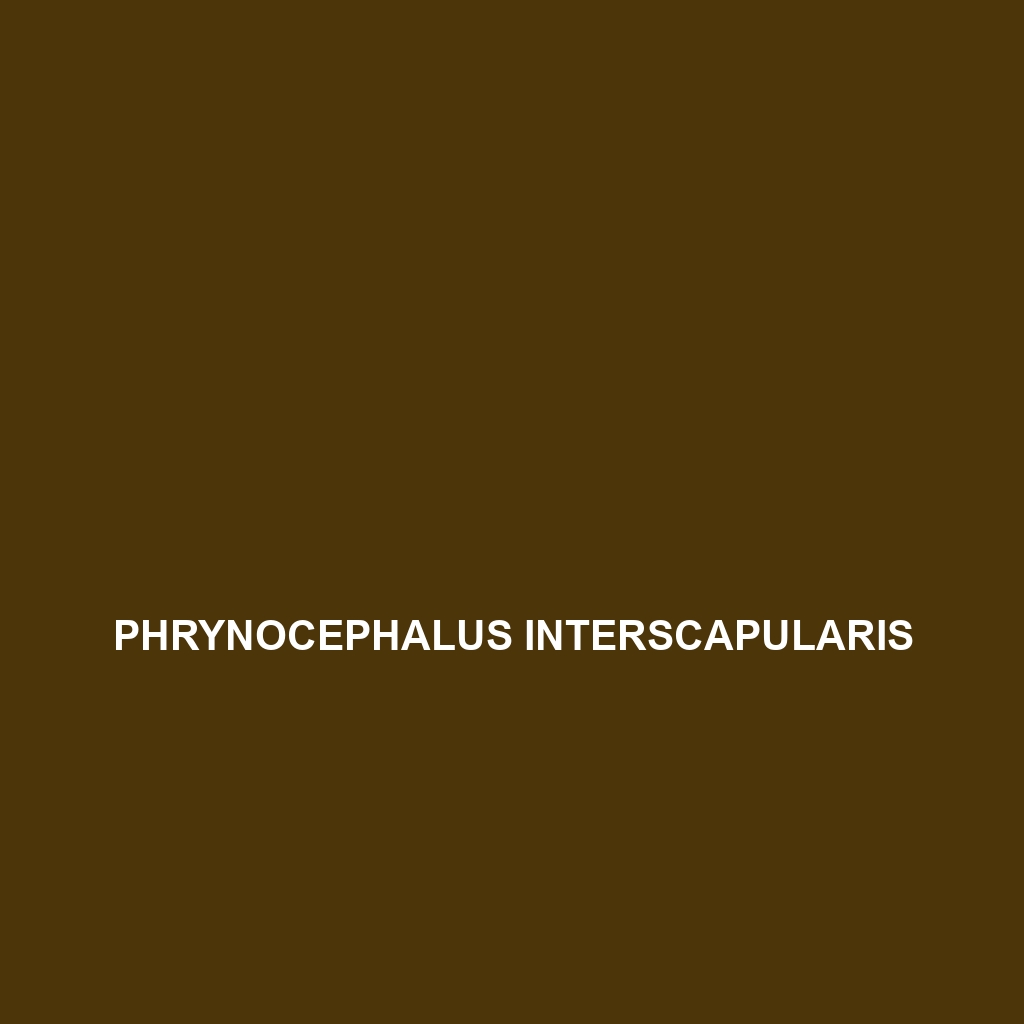Discover the Sherbrooke horned lizard (Phrynosoma sherbrookei), a captivating desert creature known for its unique flattened body and horn-like projections. Thriving in Western North America's diverse habitats, this insectivorous lizard plays a vital role in the ecosystem while exhibiting intriguing behaviors, including temperature regulation and distinctive courtship displays.
Tag: lizard conservation status
Phrynosoma modestum
Discover the modest horned lizard (<b>Phrynosoma modestum</b>), a compact, insectivorous reptile native to the arid regions of North America, known for its distinctive horn-like projections and remarkable camouflage. Thriving in warm climates, this diurnal lizard plays a vital role in controlling insect populations and maintaining ecological balance.
Phrynosoma mcallii
Discover the Phrynosoma mcallii, or flat-tailed horned lizard, a unique species native to the arid deserts of the southwestern United States and northwestern Mexico. With its distinctive flattened body, prominent flat tail, and insectivorous diet, this fascinating lizard plays a crucial role in its ecosystem while showcasing remarkable adaptations for survival.
Phrynosoma goodei
Goode's horned lizard (<i>Phrynosoma goodei</i>) is a fascinating species native to the arid regions of Arizona and New Mexico, characterized by its distinctive horn-like head projections, flattened body, and unique defense mechanism of camouflage. This insectivorous lizard thrives in semi-desert habitats, playing a vital role in its ecosystem by helping control insect populations.
Phrynosoma cornutum
Discover the fascinating Texas horned lizard (Phrynosoma cornutum), known for its unique horn-like projections and spiny scales. Native to the arid landscapes of the southwestern U.S. and northern Mexico, this charming insectivore primarily feeds on ants and plays a crucial role in local ecosystems.
Phrynosoma coronatum
Discover the <b>round-tailed horned lizard</b> (<i>Phrynosoma coronatum</i>), a fascinating insectivore native to the arid and semi-arid regions of the southwestern United States and northern Mexico. With distinctive "horns" above its eyes and a unique ability to camouflage, this resilient lizard plays a vital role in its ecosystem by controlling insect populations.
Phrynocephalus versicolor
The Color-changing Toadhead Agama (Phrynocephalus versicolor) is a unique lizard native to arid Central Asia, known for its remarkable ability to change color for communication and thermoregulation. Typically measuring 15 to 25 cm, this insectivorous species thrives in sandy and rocky habitats, playing a crucial role in maintaining ecological balance.
Phrynocephalus reticulatus
Discover the fascinating Phrynocephalus reticulatus, commonly known as the reticulated toad-headed agama, which thrives in the sandy deserts of Central Asia. This distinctive lizard, notable for its flattened body and intricate reticulated patterns, plays a crucial role in its ecosystem as an insectivore while showcasing unique burrowing and camouflaging behaviors.
Phrynocephalus interscapularis
Discover the <b>Central Asian Toad-headed Agama</b> (<i>Phrynocephalus interscapularis</i>), a distinctive lizard thriving in the arid regions of Central Asia, renowned for its unique burrowing abilities, striking camouflage, and fascinating mating displays. Measuring 15-25 cm in length, this insectivorous species plays a crucial role in maintaining ecological balance within its sandy desert habitat.
Phrynocephalus helioscopus
<p>The <b>sun-scaled agama</b> (<i>Phrynocephalus helioscopus</i>) thrives in the arid regions of Central Asia, showcasing a flattened body and unique sun-scaled pattern that aids in camouflage and thermoregulation. This insectivorous lizard is active by day, exhibiting territorial behavior and engaging in elaborate courtship rituals during the breeding season.</p>









